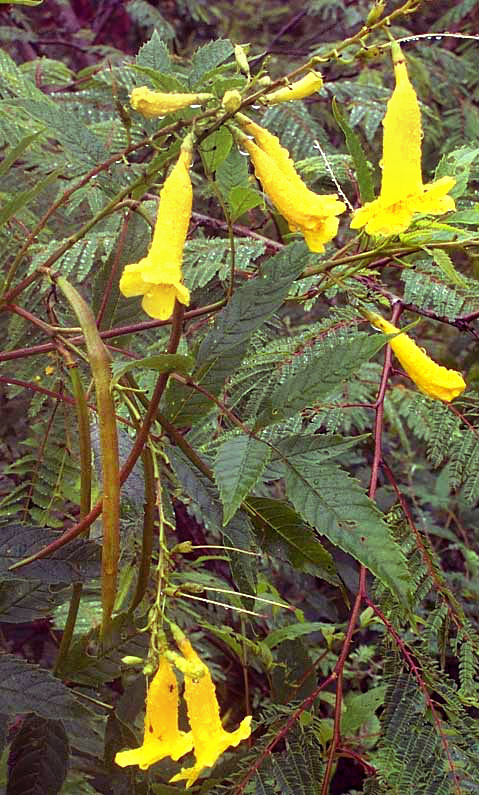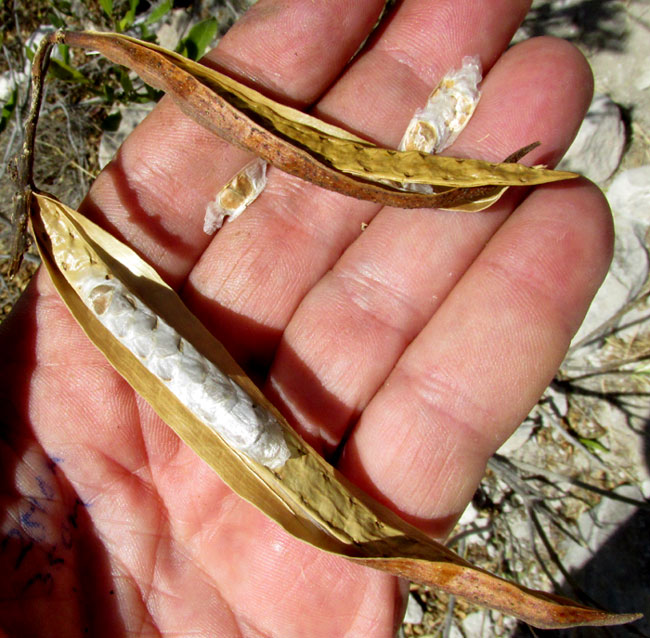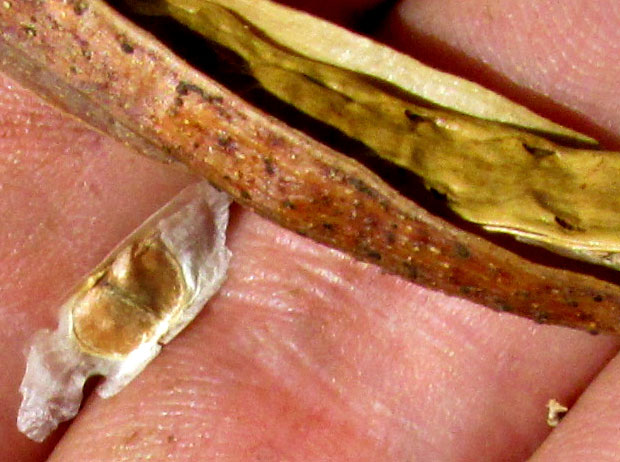Excerpts from Jim Conrad's
Naturalist Newsletter
from the September 7, 2007 Newsletter issued from Sierra Gorda Biosphere Reserve, QUERÉTARO, MÉXICO
YELLOW BELLS BLOOMING
In the foothills one of the most conspicuous flowering species nowadays is the bush or small tree whose rain- soaked flowers, slender fruit and pinnate leaves are seen below:

Where the species enters Texas and Arizona it's sometimes called Yellow Bells, as well as a host of other names. It's TECOMA STANS, a member of the same family as Trumpet Creeper and Catalpa, the Bignonia Family. It occurs in arid habitats as far south as Argentina. Here in places it's weedy, forming big blobs of yellow along roads. In fact, despite it being the Official Flower of the US Virgin Islands, the plant is weedily invading Florida, southern Africa, Pacific islands and, of course, Australia. Its slender fruit pods produce abundant small, wind-dispersed seeds with papery wings making it easy for the species to advance into new territory.
My "Plantas Medicinales de México," calling the plant Tronadora, devotes extra space to the species because traditionally here it's been considered an antidiabetic -- it lowers the blood-sugar level in diabetics. In diabetic mice, extracts of Yellow Bell have been shown to provide significant effects.
entry from field notes dated January 17, 2023, taken on trail up the southeast-facing slope of Peña de Bernal on the northwestern side of Bernal, elevation ±2,220m (7280 ft); bedrock of intrusive, igneous dacite, similar to granite; Querétaro state, MÉXICO, (N20.748°, W99.949°)
YELLOW BELLS MATURE FRUITS

Yellow Bell's capsular fruits can be seen dangling on limbs during much of the year. The ones above were splitting with seeds falling out when the slender branches bearing them were shaken. The numerous seeds are typical of the Bignonia Family, bearing bearing white, papery "wings" which help with seed dispersal. In some of the family's genera, instead of wings the seeds bear tufts of hairs.

Above, is that one seed with two wings, or two connected seeds, each with a wing? The experts say that it's one seed with a wing at each end. The top part of the above picture shows part of the split fruit. Inside the brown, split husk lies the wall-like septum separating the long capsule's two chambers, seeds having developed on both sides of the septum. This is the outcome of the flower's ovary having been divided into two compartments, or carpels, each carpel producing numerous ovules. This is a feature of the entire Bignonia Family.
Around here, Yellow Bells are common weed trees in disturbed environments. Sometimes the species is referred to as a pioneer species, part of Nature's "first aid" brigade sent in to revegetate disturbed or barren ground.